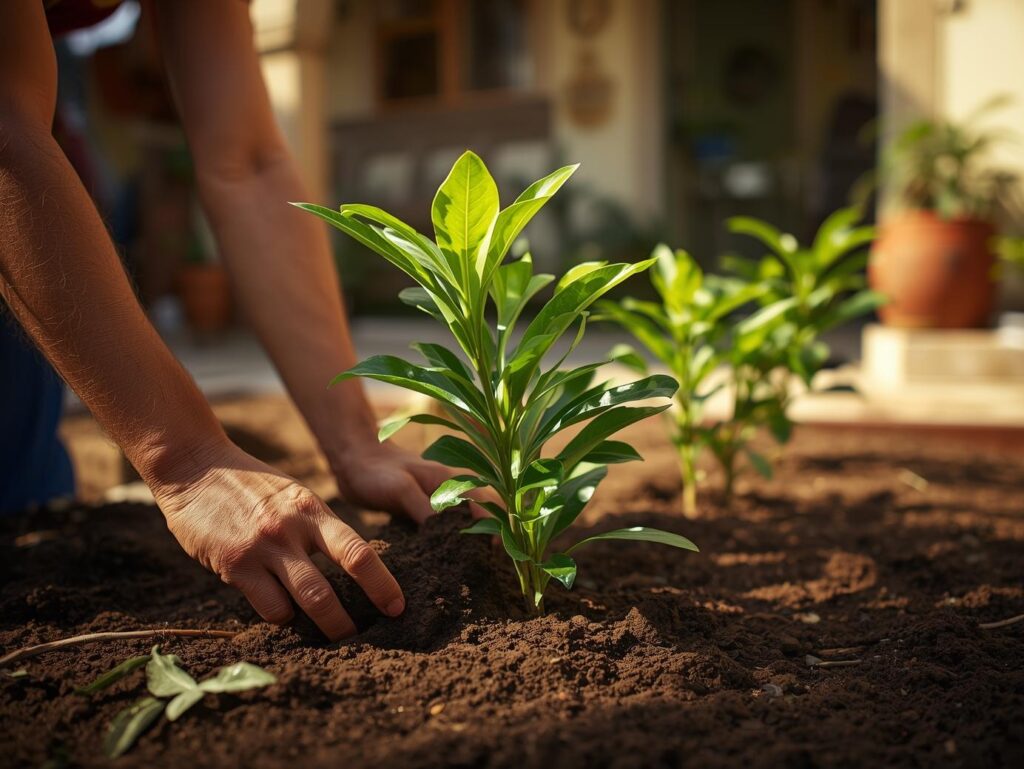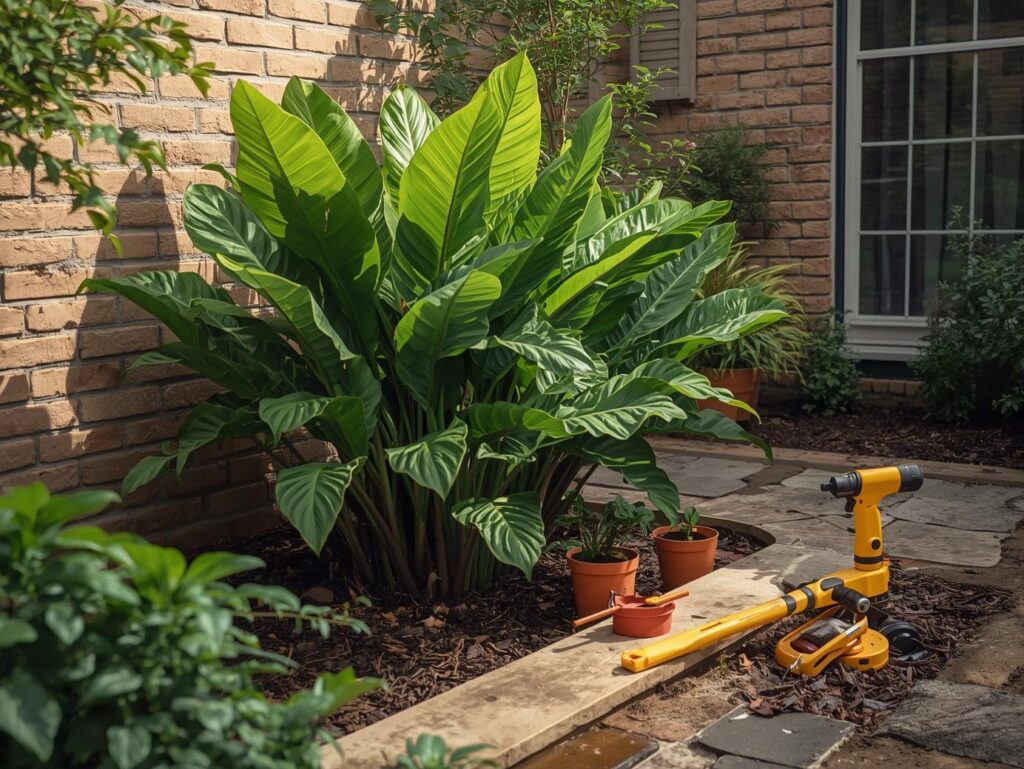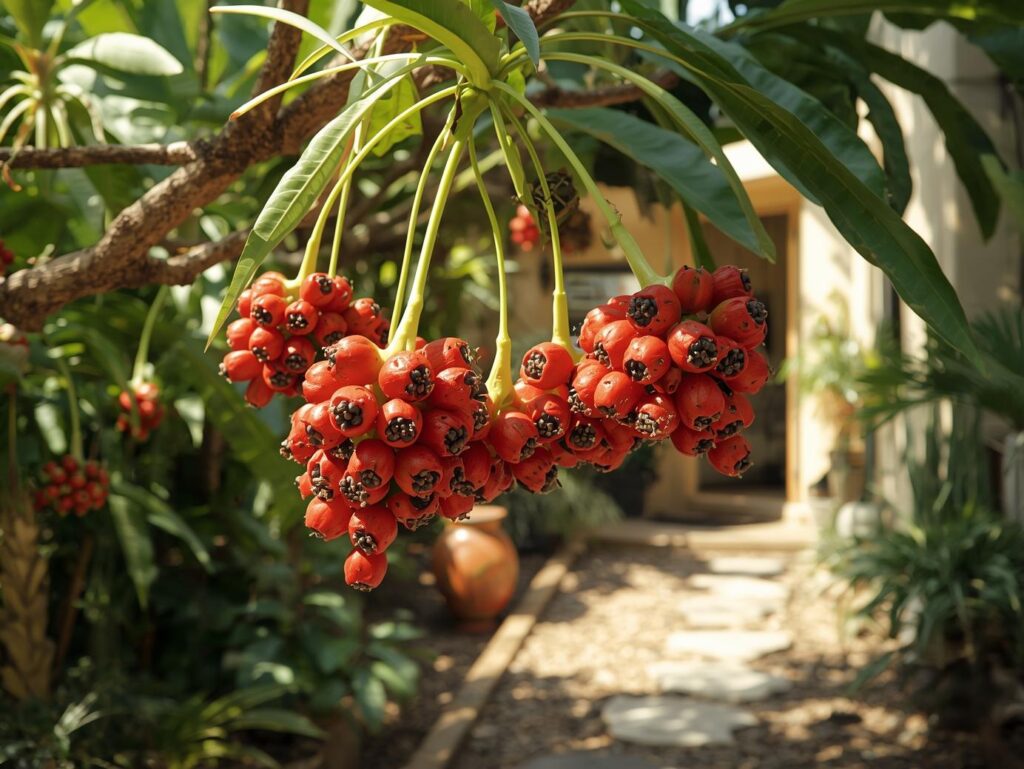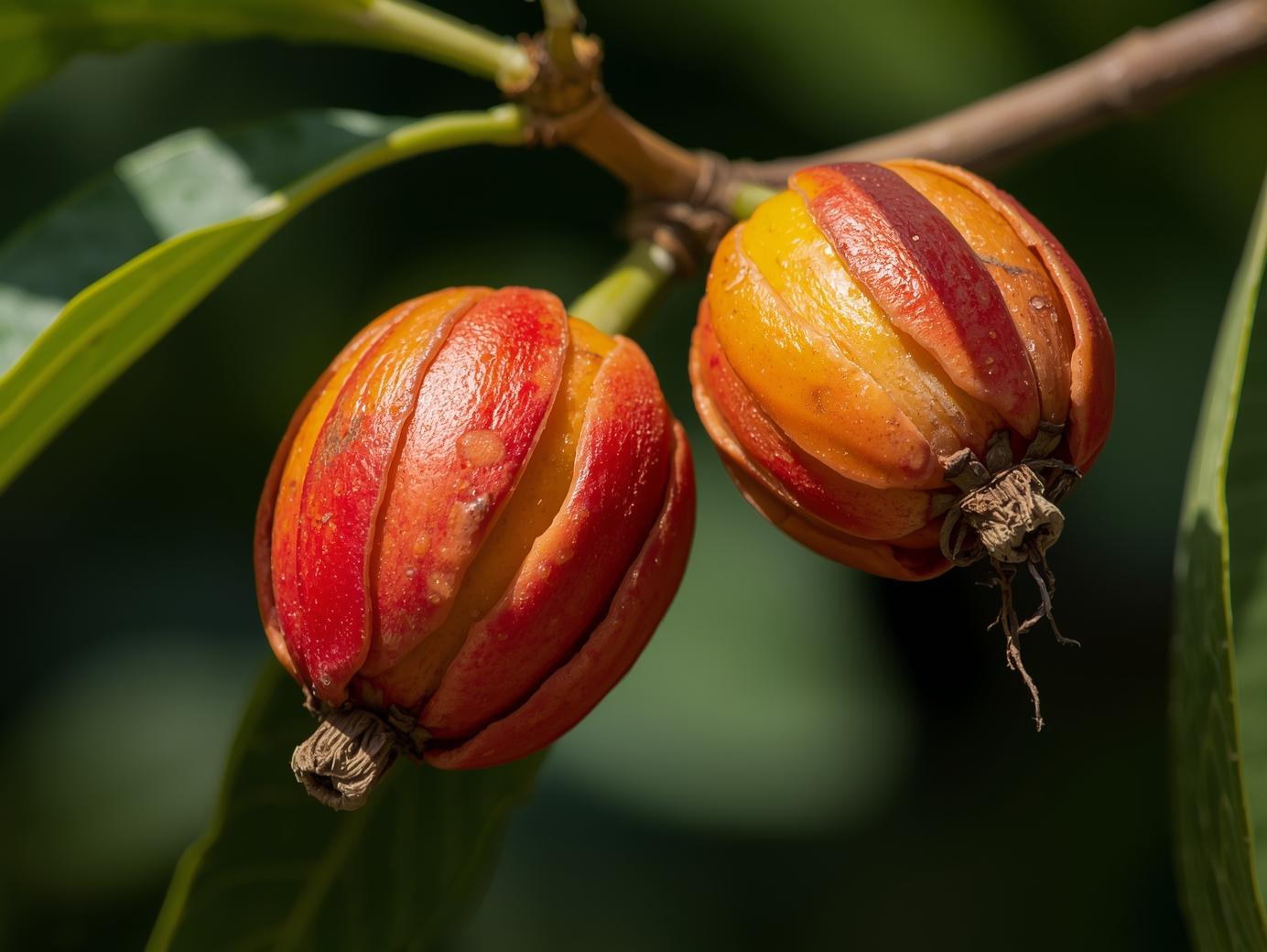Ackee, the national fruit of Jamaica, is a tropical evergreen tree valued for both its ornamental appeal and its edible fruit. Known for its bright red pods that split open to reveal creamy yellow arils and shiny black seeds, the Ackee tree adds an exotic touch to any garden. Though native to West Africa, it has adapted well to the tropical and subtropical climates of the Caribbean and southern regions of the USA, especially Florida and parts of southern Texas and California.
For gardeners in the USA who enjoy tropical plants and wish to grow something truly unique, Ackee offers both challenge and reward. However, it’s important to handle the fruit carefully, as only the fully ripe arils are safe to eat. With proper cultivation, Ackee trees can thrive in your courtyard, providing lush foliage, ornamental value, and a taste of the tropics right at home.
Soil Selection
Ackee trees prefer well-drained, fertile soil rich in organic matter. Loamy soils with good aeration and moderate moisture retention provide the ideal growing conditions. The preferred pH level ranges between 6.0 and 7.5, ensuring that nutrients remain available for healthy root and canopy development. Poorly drained or compacted soils can lead to root rot and slow growth, so ensuring good drainage is key.
If your garden soil is heavy or clay-based, amend it with compost, sand, or perlite to improve structure and drainage. Incorporating organic matter enhances fertility and supports beneficial microorganisms that help the Ackee tree establish a strong root system. Conducting a soil test before planting helps determine pH and nutrient levels so that necessary adjustments can be made for optimal growth.
Site Preparation
Ackee thrives in full sun, so selecting a warm, bright location in your courtyard is essential. The tree needs at least six to eight hours of direct sunlight each day to produce healthy foliage and fruit. Choose a spot protected from strong winds, as Ackee’s large leaves and branches can be damaged during storms or heavy gusts. In cooler climates, planting near a wall or structure that reflects heat can provide added warmth and shelter.
Before planting, clear the area of weeds, rocks, and debris to reduce competition for nutrients. Loosen the soil to a depth of at least 18 inches and mix in organic compost or aged manure to enhance fertility and drainage. If space is limited or the climate is cooler, consider growing Ackee in a large container that can be moved indoors during cold weather. Proper site preparation ensures the tree gets off to a healthy start and establishes deep, resilient roots.
Planting
The best time to plant Ackee in the USA is during spring or early summer when temperatures are consistently warm. Use a healthy, disease-free seedling or young tree from a reputable nursery. Dig a hole twice as wide and as deep as the root ball to allow for root expansion. When placing the plant in the hole, make sure the root crown is level with the soil surface before backfilling with the excavated soil.

Water thoroughly after planting to help the soil settle around the roots and eliminate air pockets. Mulching around the base helps retain moisture, regulate soil temperature, and suppress weed growth. If you plan to grow multiple trees, space them 20 to 25 feet apart to accommodate their mature size and allow sufficient airflow. In cooler regions, container planting allows for easy relocation to a warmer environment during winter.
Watering
Ackee trees prefer consistent moisture but are not tolerant of standing water. Deep watering once or twice a week during the growing season encourages deep root development and drought resistance. Young trees require more frequent watering until established, but mature trees can tolerate short periods of dryness once their roots are well developed.
In hot or dry climates, applying a layer of organic mulch helps maintain soil moisture and reduces evaporation. During the rainy season, reduce watering to prevent oversaturation. Always check the top few inches of soil before watering; if it feels dry, it’s time to water again. Proper hydration supports healthy leaf growth, flowering, and fruiting throughout the year.
Fertilizing
Ackee trees benefit from a balanced fertilization schedule to promote vigorous growth and fruit production. Apply a balanced fertilizer with equal parts nitrogen, phosphorus, and potassium in early spring. Nitrogen promotes lush foliage, phosphorus strengthens roots, and potassium enhances flower and fruit formation. Reapply fertilizer every three to four months during the growing season for optimal results.
Organic fertilizers such as compost, bone meal, or fish emulsion are excellent alternatives that improve soil fertility while supporting microbial life. Avoid over-fertilizing, as too much nitrogen can lead to excessive leaf growth and delay fruiting. Regular soil testing ensures you are providing the correct nutrients without creating imbalances that may affect plant health.
Pruning & Training
Pruning Ackee trees helps maintain their shape, promote airflow, and encourage productive growth. The best time to prune is in late winter or early spring before new growth begins. Remove dead, diseased, or crossing branches to prevent overcrowding and improve sunlight penetration within the canopy. This also helps reduce the risk of fungal diseases and enhances fruit quality.
Training young trees early ensures a strong structure that can support heavy fruiting later. Choose a single central leader with evenly spaced branches to form a balanced framework. Light pruning throughout the year can help maintain size, especially when grown in smaller courtyards or containers. Proper pruning and training promote both beauty and productivity in your Ackee tree.
Pest & Disease Control
Ackee trees are relatively hardy but can still be affected by pests such as aphids, mealybugs, and scale insects. Regularly inspecting the leaves and branches helps detect early signs of infestation. Natural pest control methods, including neem oil, horticultural soap, or introducing beneficial insects like ladybugs, can effectively manage common pests without harming the environment.

Diseases such as anthracnose, root rot, and leaf spot can occur in humid or poorly drained conditions. Ensuring proper spacing, good airflow, and well-drained soil minimizes the risk of disease. Removing fallen leaves and pruning affected branches prevents the spread of infections. Maintaining cleanliness and balance in your garden is essential for keeping your Ackee tree healthy year-round.
Fruiting & Harvest
Ackee trees typically begin to bear fruit within three to four years after planting. The fruit matures when the pods turn bright red and naturally split open to reveal the creamy, edible arils and glossy black seeds. Only harvest the fruit when it has fully opened on the tree, as unripe Ackee contains toxins that can be harmful if consumed prematurely.

Harvest ripe pods carefully and remove the edible yellow arils, discarding the seeds and inner membrane. The arils can be cooked and used in a variety of dishes, especially Caribbean-style recipes. Regular harvesting encourages continuous production, and with proper care, your Ackee tree can yield abundant fruit for many years. In addition to its culinary value, the vibrant fruit adds ornamental beauty to your courtyard garden, making it both a functional and decorative feature.
